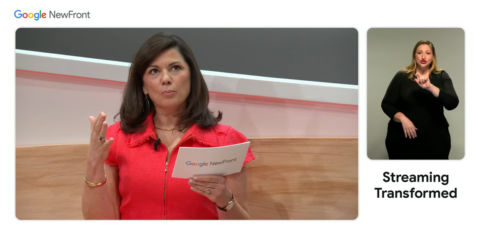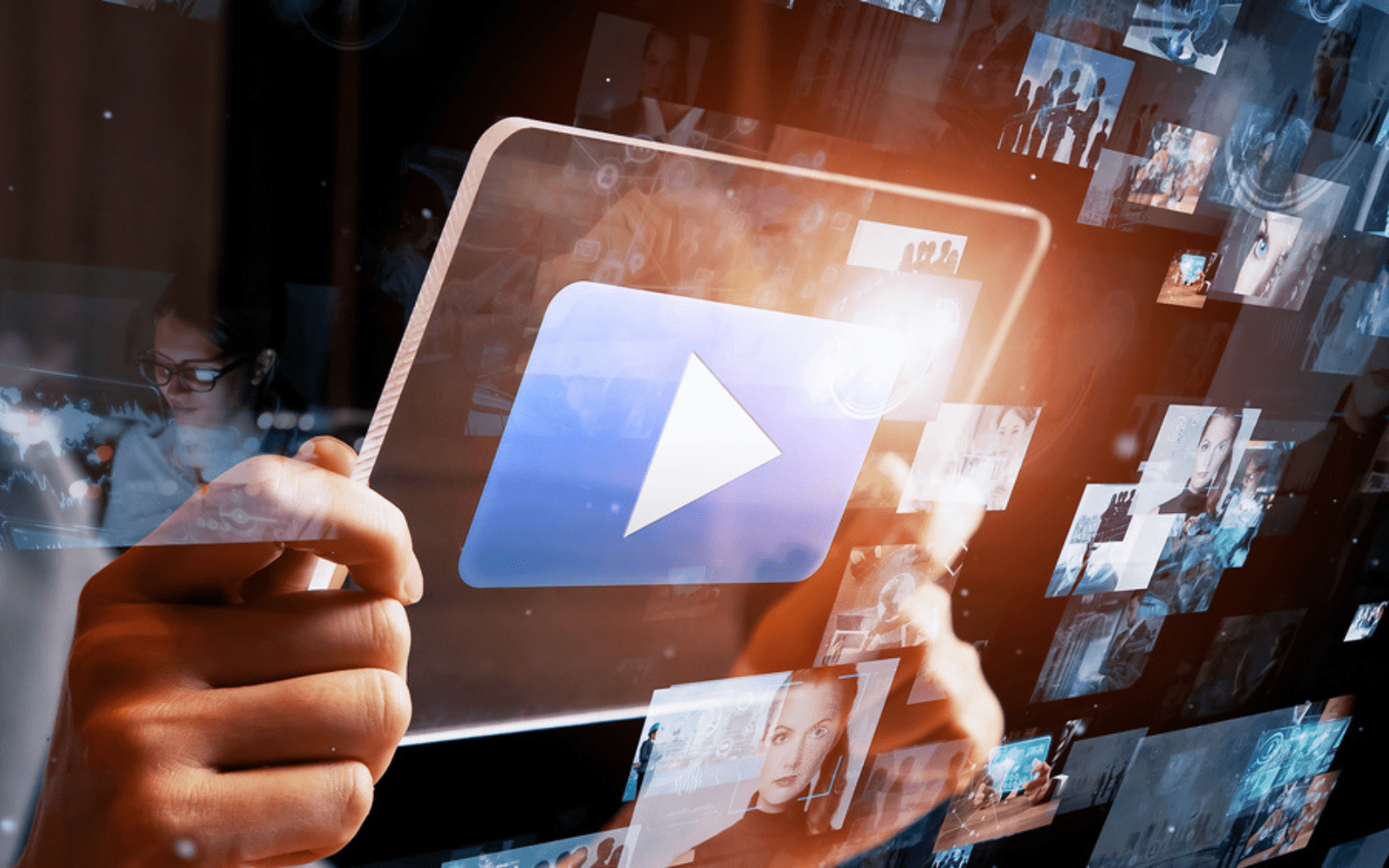Google unveiled four Display & Video 360 updates during IAB NewFronts 2024 on Monday morning, while the YouTube evening reception failed to make any news during their Monday evening event.
Why did Google hold one NewFront event on Monday morning and YouTube hold another one on Monday evening at the 2024 IAB NewFronts?
There’s a classic strategy for maximizing your retail shelf space that involves product segmentation to get more space allocation (minimizing your competitors’ space on retail shelves).
Procter & Gamble (P&G) has used this strategy for more than a hundred years, which is why it has multiple brands of laundry products (including Ariel, Cheer, Era, and Tide).
The marketing executives at Google and YouTube may have segmented the audience that attends IAB NewFronts into two groups: one focused on connected TV (CTV) and another on social video.
The Right Time To Unveil How Google Display & Video 360 Has Evolved
As I reported last week in Video Ad Spend And Trends Revealed Ahead Of IAB NewFronts 2024, the IAB expects ad spending on CTV to grow by 12% to $22.7 billion in 2024.
However, when people now say they “watch TV,” it means different things than it did in the past. Today’s viewers seamlessly jump from hit shows to creator content on their CTVs. Heck, they’re even watching YouTube Shorts on their smart TVs.
Audiences are fluid, so reaching them now means showing up when and where they watch the video content they love instead of appearing on the large-screen television during prime time in the family room.
This explains why the Google NewFront seemed to be the right time and place to unveil how Google’s Display & Video 360 has evolved to help marketers and media agencies adjust their strategies and video ad buys to reach their audiences across streaming content.
A Nielsen Media Mix Modeling (MMM) meta-analysis of 15 U.S. consumer packaged goods (CPG) brands, commissioned by Google, found that marketers using unified media buying through Display & Video 360 achieved a significant advantage. They saw a 120% higher return on ad spend (ROAS) compared to third-party video bought directly and an 18% higher ROAS than linear TV.
4 Updates For Google Display & Video 360 Updates At NewFront
At the Google NewFront event on Monday morning, Kristen O’Hara, the VP of Agency, Platforms & Client Solutions at Google, provided four updates that were amplified by a dozen other speakers.
 Image from Google NewFront, April 2024
Image from Google NewFront, April 2024Strategic relationships with streaming partners
First, O’Hara announced:
“We’re strengthening strategic relationships with streaming partners like Disney, Paramount, NBCUniversal and Warner Bros. Discovery. For example, our integration with Disney’s Real-time Ad Exchange (DRAX) lets you tap into their vast inventory and reach at scale.”
In response, Pete Chelala, the VP of Programmatic Advertising Sales at Paramount, said:
“Paramount specializes in creating content fans love on the platforms they can’t live without. Partnering with Google ensures that our clients can access Paramount Advertising’s premium inventory seamlessly through Display & Video 360.”
And Jill Steinhauser, the senior vice president of Ad Sales Revenue and Planning at Discovery Communications, added:
“We’re thrilled to bring MAX’s diverse content to Display & Video 360. This allows advertisers to programmatically reach audiences at scale, unifying their media in one place.”
Introducing Instant Deals Tool For Marketers
To move as quickly as streaming audiences are these days, agencies also need more flexibility. So, the second announcement featured a couple of new products.
O’Hara said:
“We’re introducing instant deals – a new tool for marketers to configure customized deals with top publishers right from the Display & Video 360 interface, skipping the complex negotiation process.”
She explained, “This buying method is already available today for high-impact reservation YouTube placements, like YouTube Select and Masthead. And soon, agencies will be able to access those same placements with non-guaranteed deals for even greater budget flexibility. Plus, instant deals are expanding beyond YouTube to major publishers like Disney.”
O’Hara continued:
“We also know managing yearly commitments across multiple publishers and deal types can be a tangled mess of spreadsheets. This is why we’ve built a tool called commitment optimizer in collaboration with our agency partners to streamline the process of managing commitments. Input your deal terms and goals, then Google AI intelligently optimizes the mix of guaranteed and non-guaranteed inventory for flexibility as well as reach.”
Agencies that have been testing the commitment optimizer are already driving results, expanding access to premier deals to five times more clients.
For example, Clare Ritchie, the senior vice president and global head of Programmatic & Inhousing at OMG, said,
“Our co-development initiatives with Display & Video 360 enable OMG to deliver custom technology solutions that help our clients achieve better results.”
Privacy-Forward Audience Solutions
The third announcement at the Google NewFront event promises to help the advertising industry reach audiences accurately while respecting people’s privacy.
Google has encouraged advertisers to invest in first-party data for years.
Google’s Publisher Advertiser Identity Reconciliation (PAIR) solutions provide a way for advertisers and publishers to reconcile their first-party data securely. This enables marketers to show relevant ads to high-intent audiences, like past purchasers, while protecting privacy.
To date, PAIR has delivered strong results for advertisers like Omni Hotels. According to LiveRamp, PAIR audiences provide 11% incremental reach compared to cookie-based lists.
O’Hara said:
“To further scale this privacy-forward solution, we’re collaborating to build open standards and contributing the PAIR protocol to the IAB Tech Lab. This will enable ad tech companies – and the industry as a whole – to adopt privacy-forward audience solutions that benefit everyone.
Shailley Singh, the executive vice president of product and chief operating officer of IAB Tech Lab, observed:
“It’s a big step towards making privacy-enhancing technologies mainstream in the programmatic supply chain.” He added, “We’re eagerly looking forward to ushering the PAIR protocol into an open industry standard.”
Seamlessly Integrating Generative AI Into Display & Video 360
The fourth announcement at the Google NewFront event focused on Google AI.
O’Hara said:
“The rise of programmatic advertising brought efficiency to media buying, but it’s time to evolve even further. We’ve heard from marketers and their media agencies that they expect a simpler, more intuitive DSP experience. So, we’re continuing to make Google AI an essential part of Display & Video 360, seamlessly integrating it into your workflows and bringing generative AI capabilities.”
She added:
“One of the first places you’ll see generative AI show up as a helpful collaborator in Display & Video 360 is in setting up your audience strategy with a feature called audience persona. Describe your ideal audience, and audience persona instantly generates a combination of audience segments that matches your goals.”
This tool enables agencies to select the right audiences from thousands of options while helping them uncover new, high-potential audiences. It improves unduplicated reach and delivers better results for their clients.
And even though Google AI offers suggestions, advertisers always have the final say. They can easily edit the generated selection, giving them full control over their campaigns.
Audience persona is expected to launch this summer, starting with Google’s audience and demographic segments.
“Of course, not all customers within an audience segment bring the same value to your business,” O’Hara acknowledged. “That’s where custom bidding comes in.”
This capability lets advertisers indicate their highest priorities within Display & Video 360. Then, Google AI uses these custom signals to focus on the impressions that deliver the results that an advertiser wants.
She said:
“Custom bidding now includes brand awareness and engagement objectives, so you can optimize for behaviors like ‘time on screen.’ We soon plan to add CTV-specific signals like genre as well.”
O’Hara concluded:
“Transparency is a key responsibility for Display & Video 360 as marketers harness the helpfulness of AI. This is why we’ve launched experiment center, a tool that lets you take control, test strategies and optimize the way you use Google AI for maximum impact.”
The tool’s dashboard offers top-line insights, enabling quick, data-driven decisions. The experiment center goes beyond tracking just conversions, providing a comprehensive view across the entire customer journey – from awareness to consideration and action.
It provides a new way for advertisers to see how their latest AI-powered strategies compare to their previous approaches and understand the impact of consolidating their video streaming buys on a single platform.
Youtube Evening Reception Failed To Share Any News
As I reported last week in Video Ad Spend And Trends Revealed Ahead Of IAB NewFronts 2024, social video is on track toward its second year of 20% year-over-year (YoY) growth and is projected to rise to $23.4 billion.
So, I was expecting YouTube to unveil umpteen updates to their digital video strategies during their evening reception. However, YouTube didn’t share any news or presentations during the closed event for customers.
Why not?
Well, it’s worth noting that this year’s YouTube Brandcast event, part of the broadcast upfront week, is scheduled for May 15, 2024 at Lincoln Center’s David Geffen Hall.
This is probably where YouTube plans to share a plethora of strategic insights with television network executives, major advertisers, and the media at the beginning of an important advertising sales period.
VidCon Anaheim 2024 will take place from June 26–29, 2024 at the Anaheim Convention Center. Over 55,000 attendees are expected to pack the Community, Creator, and Industry tracks. Stay tuned for more breaking news and important developments at this event.
In the old days, TV newscasters would say, “Don’t touch that dial” or “Film at 11.” But neither of these statements makes any sense today. These days, CTVs don’t have dials, and digital cameras don’t use film.
So, just as we’ve had to adjust to these changes in the way we watch TV, we’ll also need to adjust to the new way that Google and YouTube package and communicate their video strategies.
In 2023, YouTube revealed its strategic direction over three key events, and in 2024, we may not get a clear picture of the changing landscape until the end of June.
More resources:
Featured Image: metamorworks/Shutterstock
